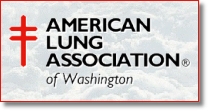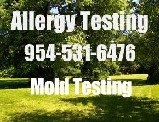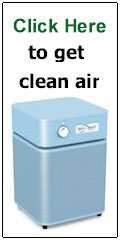Candle Soot & Pollution
Although candles create a warm, inviting feeling within the home during the holidays and throughout the year,
there are studies showing that candle usage can create problems for your home's interior. Burning candles can emit
small amounts of toxins such as acetone, benzene, lead and mercury into the air. Normal use of candles should not
pose a health hazard. Large quantities of these toxins, however, may prove to be harmful. There are times during
certain holidays such as Christmas and New Years that people will burn more candles than ususal. This can create an
Indoor Air Quality problem for people with Asthma and Allergies. See Candle Pollution:
 Candle emissions can also leave dark shadows (ghosting) or soot on walls, on furniture and in the
heating and cooling system, often costing homeowners thousands of dollars to fix. We had one client who had
to clean her Air Conditioning Unit coils because of soot on the coils. Cost was $419.00 to burn candles
in her home for Christmas. Candle emissions can also leave dark shadows (ghosting) or soot on walls, on furniture and in the
heating and cooling system, often costing homeowners thousands of dollars to fix. We had one client who had
to clean her Air Conditioning Unit coils because of soot on the coils. Cost was $419.00 to burn candles
in her home for Christmas.
The following are tips to minimize candle pollution in your home:
- Because many scented and slow burning candles may contain metals, consumers should look to see if the core
of the wick is shiny metal. If you see metal, do not burn, or check with the manufacturer. When you do burn
candles, keep the wicks cut short to one-quarter of an inch. The longer the wick, the larger the flame, the
brighter the candle, the more the soot.
- Keep candles away from drafty places. Wind will blow soot and toxins into the air and cause inefficient
burning, a cause of smoking or sooting.
- Do not shake or tip candles because the candle can smoke and send soot into the air to land on walls,
carpets and furniture.
- Keep candles in places away from children and pets. Besides fire hazard, small children and animals may
accidentally disturb a candle, causing it to smoke and release soot.
- Avoid putting small children directly on carpet. Lead and other pollutants from candles are attracted to
synthetic fibers often used in upholstery and carpeting.
- Refrain from burning scented or slow-burning candles that have additives.
- Look for candles, such as bees wax, that do not contain high levels of pollutants.
- Keep your home clean. Vacuuming may just re-circulate particles unless you use high-performance vacuum bags
that catch micro particles.
- Use a good filtration system on your furnace that attracts micro-particles. High performance furnace
filters minimize the level of pollutants that circulate throughout your home. Changing filters more frequently
will help reduce the amount of micro particles in the home.
Be aware of candles and holiday products that have been recalled by the U.S. Consumer Product Safety Commission.
Please contact the following sources for more information on candles:
Consumer Product Safety Commission: www.cpsc.gov
EPA's Indoor Environments: EPA
Indoor Air Quality Information Clearinghouse: 1-800-438-4318
Key Candle
Facts:
Candle use is on the rise and is higher during the holiday season. Candles, if not used safely, can give off soot
and small amounts of potential toxins. In large quantities these toxins may be harmful, however, normal use of
candles should not pose a health hazard. Candle emissions can damage furnishings and cause ghosting on walls.
Key Candle
Tips:
Choose bees wax candles instead of scented or slow-burning candles with metal in the wick, or candles that are
greasy to the touch. Keep wicks trimmed to less than ¼ inch to minimize sooting. Keep candles away from drafty
places. Vacuum more often during periods of high candle use with high-performance vacuum bags that catch micro
particles. Use a good filtration system on your furnace and replace filters more often during periods of high
candle use. Be aware of candles and holiday products that have been recalled by the U.S. Consumer Product Safety
Commission.

Call (954)
531-6476
Copyright © 2003 Safe Homes Environmental
Consultants
All rights reserved.
|  Candle emissions can also leave dark shadows (ghosting) or soot on walls, on furniture and in the
heating and cooling system, often costing homeowners thousands of dollars to fix. We had one client who had
to clean her Air Conditioning Unit coils because of soot on the coils. Cost was $419.00 to burn candles
in her home for Christmas.
Candle emissions can also leave dark shadows (ghosting) or soot on walls, on furniture and in the
heating and cooling system, often costing homeowners thousands of dollars to fix. We had one client who had
to clean her Air Conditioning Unit coils because of soot on the coils. Cost was $419.00 to burn candles
in her home for Christmas.




